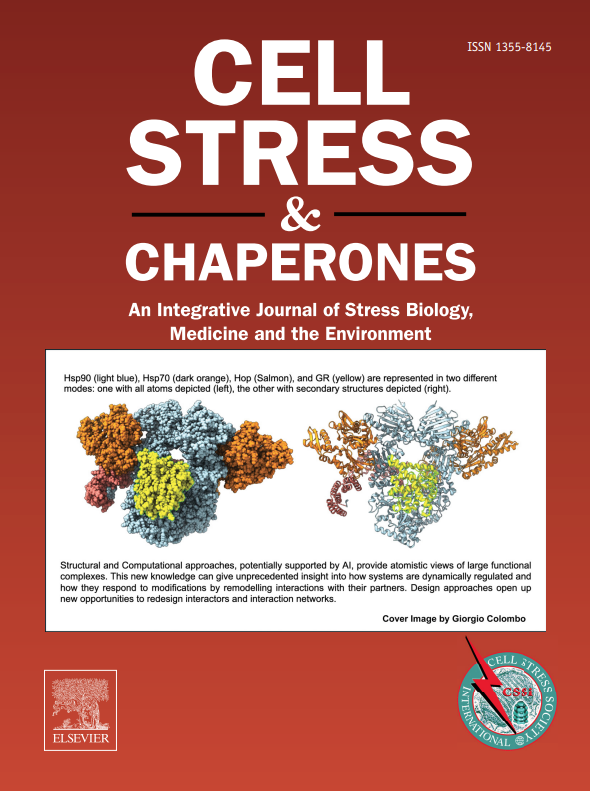一种源自热休克蛋白 60 的改变肽配体在 Lewis 大鼠体内的生物分布和药代动力学特征。
IF 3.2
3区 生物学
Q3 CELL BIOLOGY
引用次数: 0
摘要
人类热休克蛋白 60(HSP60)是一种参与类风湿性关节炎(RA)发病机制的自身抗原。源自 HSP60 的表位可触发调节性 T 细胞(Treg)的活化。CIGB-814 是一种源自 HSP60 的改变肽配体(APL)。在临床前模型中,这种多肽具有抗炎作用并能增加调节性 Treg。I 期临床试验结果表明,CIGB-814 是安全的,并能激活与诱导耐受相关的机制。耐受诱导剂的生物分布特征对于激发其效应至关重要。这项在 Lewis 大鼠身上进行的研究的主要目的是确定:(1)CIGB-814 的靶器官;(2)药代动力学(PK)特征。按三个剂量水平皮下注射的 125I-CIGB-814 分布在甲状腺中,但也有相当多的剂量分布在胃、小肠和大肠中。此外,与给药后 4 小时相比,给药后 24 小时淋巴结(LN)中的 CIGB-814 浓度有所增加。小肠和淋巴结是诱导耐受的绝佳部位,这是因为这些组织中树突状细胞的特性。路易斯大鼠血液中 CIGB-814 在 0.5 至 1 小时内的最高浓度与为患者测定的 PK 曲线一致。总之,这些结果支持了 CIGB-814 治疗 RA 的可能性。本文章由计算机程序翻译,如有差异,请以英文原文为准。
Biodistribution and pharmacokinetic profiles of an altered peptide ligand derived from heat-shock proteins 60 in Lewis rats
Human heat-shock protein 60 (HSP60) is an autoantigen involved in the pathogenesis of rheumatoid arthritis (RA). Epitopes derived from HSP60 can trigger activation of regulatory T cells (Treg). CIGB-814 is an altered peptide ligand (APL) derived from HSP60. In preclinical models, this peptide had anti-inflammatory effects and increased Treg. The results from phase I clinical trial indicated that CIGB-814 was safe and activated mechanisms associated with induction of tolerance. Biodistribution profile for inducers of tolerance is crucial for triggering its effects. The primary goal of this study in Lewis rats was to identify (1) the target organs of CIGB-814 and (2) the pharmacokinetics (PK) profile. 125I-CIGB-814 administered subcutaneously at three dose levels was distributed in the thyroid gland, but also at considerable levels to the stomach and small and large intestines. In addition, concentration of CIGB-814 was increased in lymph nodes (LNs) at 24 h, compared with 4-h post-administration. Small intestine and LNs are excellent sites for induction of tolerance, due to the characteristics of dendritic cells in these tissues. Maximum concentration of CIGB-814 in blood of Lewis rats at 0.5 to 1 h agrees with PK profile determined for patients. Altogether, these results support therapeutic possibilities of CIGB-814 for RA.
求助全文
通过发布文献求助,成功后即可免费获取论文全文。
去求助
来源期刊

Cell Stress & Chaperones
生物-细胞生物学
CiteScore
7.60
自引率
2.60%
发文量
59
审稿时长
6-12 weeks
期刊介绍:
Cell Stress and Chaperones is an integrative journal that bridges the gap between laboratory model systems and natural populations. The journal captures the eclectic spirit of the cellular stress response field in a single, concentrated source of current information. Major emphasis is placed on the effects of climate change on individual species in the natural environment and their capacity to adapt. This emphasis expands our focus on stress biology and medicine by linking climate change effects to research on cellular stress responses of animals, micro-organisms and plants.
 求助内容:
求助内容: 应助结果提醒方式:
应助结果提醒方式:


